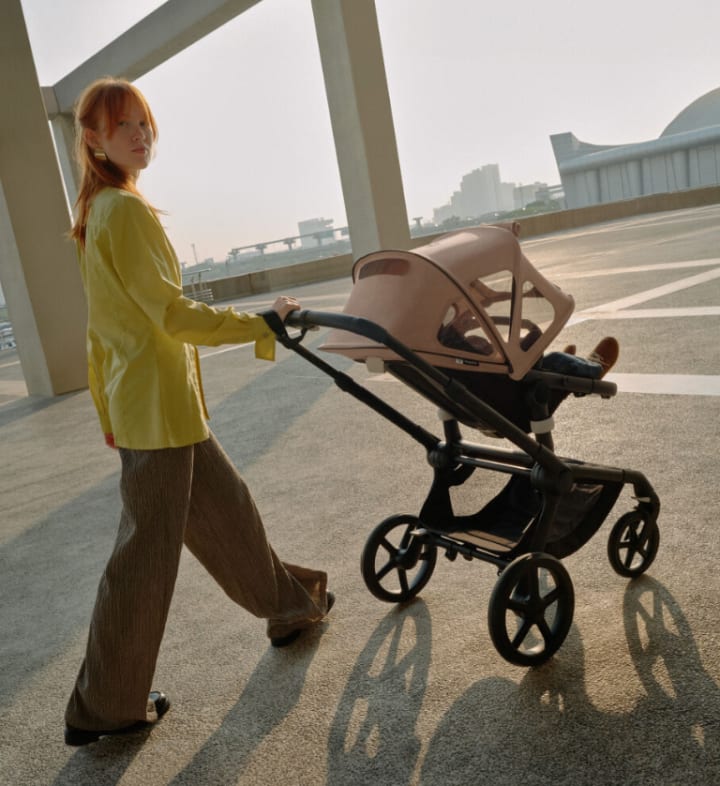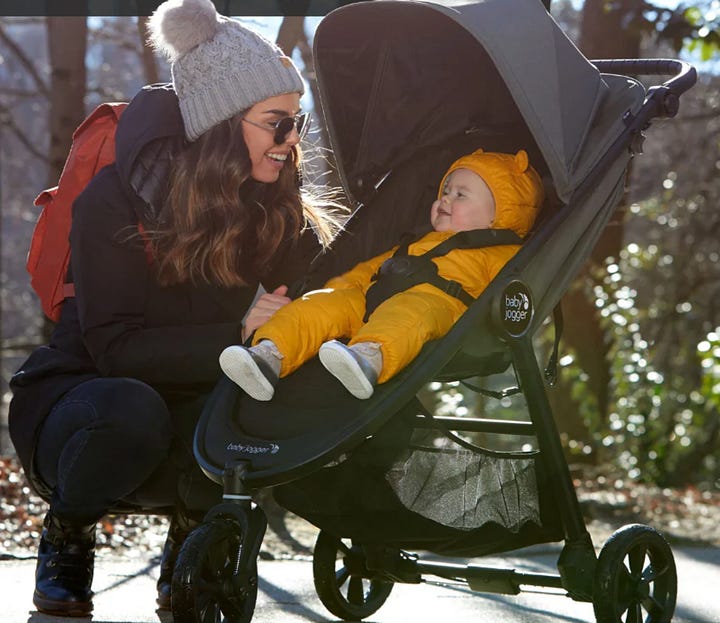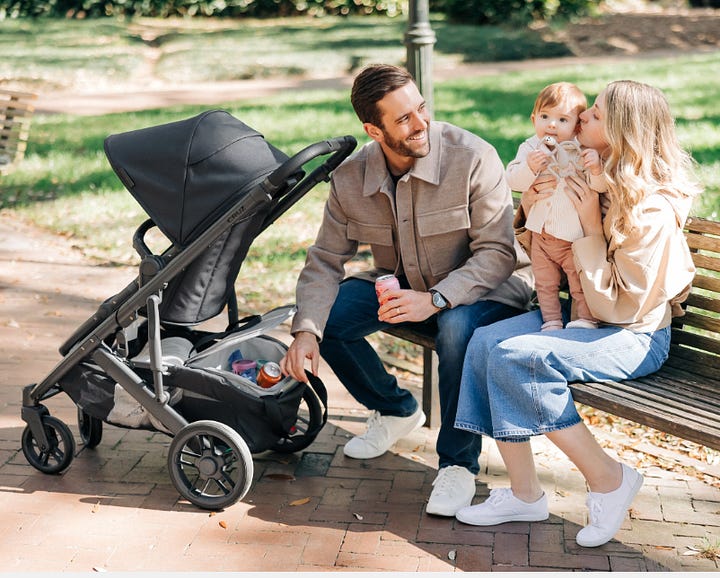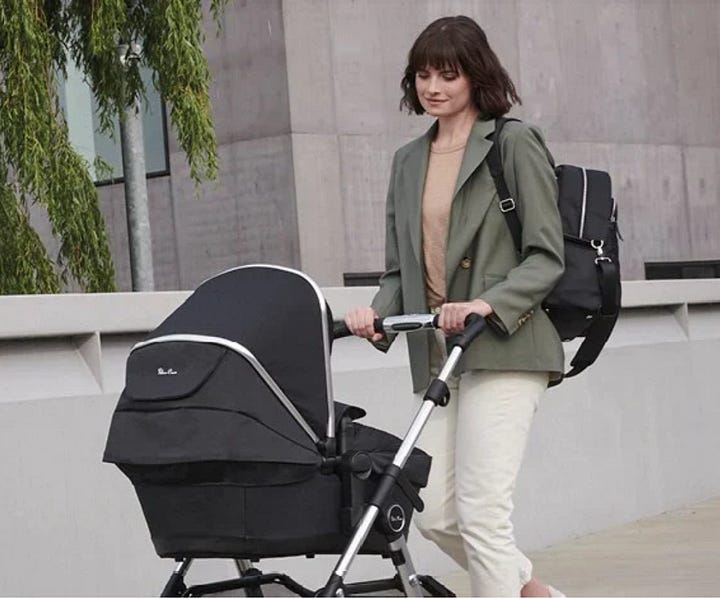I’ve known for a long time that people have been carrying their babies for millennia, and that cultures around the world invented a myriad of ways to make it easier. I also knew that there was a rapid decline in traditional babywearing in the last few centuries, and I was fully prepared to point the finger at industrialisation and the invention of the pram. Yet when I started investigating the history of the pram, I discovered that the story was far more complicated and interesting than I had anticipated.
See, while people have been carrying their babies for millennia, they have also been not carrying their babies for millennia. There is evidence from as early as 2400 BCE of mothers using cradleboards, in which a baby could be put while the mother worked, and many of which could be gently rocked with a string from a distance.
Additionally, while there is evidence of babies being transported on wheels in several ancient cultures, the first modern stroller was invented by William Kent in 1733, after being commissioned by the Duke of Devonshire to create a means to transport his children. The first stroller was designed to be pulled by goats or ponies and was ornately decorated with a large family crest and crushed velvet seat. Its design was evidence that the primary concern was aesthetics, not function, and bore testimony that this baby carriage was intended to transport royal babies.
From the beginning, the baby carriage was a status symbol, and other wealthy families soon bought this luxury item for their own children. Using a baby carriage was an obvious display of wealth and prestige.
Over the next 100 years, changes were introduced to make the baby carriage more functional, including the ability to push the carriage, brakes, and a parasol holder. However, sales were still slow, and mostly restricted to those who could foot the bill for a luxury item, until Queen Victoria was publicly seen to buy three of the newly designed ‘perambulators’ from America. Their popularity quickly skyrocketed, and additional designs ensured that the pram (as they came to be known in England) was affordable to all but the poorest families.
In fact, prams became so ubiquitous that it seemed that we forgot that there was ever anything before the pram. Cradles and slings were discarded in favour of the hugely popular prams, and in an address to the Royal Society of the Arts in 1923, Samuel J Sewell claimed “The physicians of all countries agree that a woman is not fitted by nature to carry a babe in her arms, on her back, nor on her head or shoulders – these are injurious to both. Hence the need of a miniature carriage.”
Prams as a status symbol
While he was wrong about that (read more about the benefits of babywearing to both parent and child here), in the same address he said something that is still mostly true today, over 100 years later: “Experience shows, however, that for the first-born even the poorest mother insists on a new pram, and that she wants one different from her neighbours.”
In dissecting that statement I’m going to draw on the work of Thomsen and Sørensen, from their paper, The first four-wheeled status symbol: Pram consumption as a vehicle for the construction of motherhood identity.
1. “even the poorest mother insists on a new pram”
While we traditionally engaged in rites of passage to mark important life transitions (such as the transition to motherhood), our secularised world has largely replaced traditional rites of passage with consumption activities. This is most notably seen in baby showers or the wedding gift registry, where we celebrate important milestones by buying things (and then we buy more things to celebrate buying the first things… you can read more about that here). For new parents, the most visible of these purchases is the pram. Shopping for and buying a new pram helps expectant parents to construct new identities as they transition into parenthood. They write that “liminal consumers [those transitioning to a new role] rely on consumption symbolism to approach a desired motherhood identity”. Buying a new pram marks the transition from woman to mother.
2. “she wants one different from her neighbours”.
People are complicated. We simultaneously want to stand out and be unique, yet we also desperately want to fit in. Perhaps that is why many have noticed that specific prams dominate in certain neighbourhoods, for example “Today, it’s not prams nor even $800 strollers but $1,900 UppaBaby VISATA travel systems that line the edges of certain New York playgrounds.” These prams may have different accessories and vary in the colour of their linings, but they’re all the same. They connote a specific type of mother and offer a “deceptive but alluring promise [that] by being the right kind of consumers we can be the right kind of parents raising the right kind of children”.
It's easy to see what type of motherhood a pram is selling you by looking at the mothers (for it is typically mothers presented) shown in their advertising material. Silver Cross mothers clearly don’t do much hands on baby care (no one in their right minds would wear white pants with a baby or toddler around). UppaBaby Vista mothers push their children through clean walkable neighbourhoods in their white shoes and relaxed denim. City Mini GT parents push their bundled-up babies through parks and forests, undaunted by the adventure of a gravel path. Bugaboo parents are cosmopolitan, trendy, and environmentally conscious.




For this reason, Thomsen and Sørensen point out that while prams may support the transition to motherhood, they can also complicate it. If an uninitiated parent buys the ‘wrong’ pram, namely one that jars with their vision of parenthood, they risk unwittingly aligning themselves with a different social circle. And while these differences may not be salient to most parents, some are acutely aware of the social status attached to various models of pram and can feel alienated from their peers when they aren’t pushing the ‘right’ pram.
Right and wrong prams
I want to make this crystal clear – there is no wrong pram. All prams meet the same safety standards, regardless of how much they cost.
There also is no right pram. You could buy the most popular or most expensive or most recommended pram, and still realise that it doesn't suit your needs.
But there are better and worse prams for YOU.
A short way of figuring out which pram will be better for you is leaning into stereotypes. If everyone in your neighbourhood or social circle is pushing the same pram, then it will probably be a good pram for you too.
Beyond that, you can approach pram ownership in a similar way to car ownership. Consider the terrain you frequent (shopping centres, gravel paths, cobblestones, busy city footpaths), the storage capacity you need (if you live in a walkable neighbourhood, you probably need more space than if your pram is just an adjunct to the car), the seating capacity (do you plan on having another baby in the next few years?), and how easily it parks (you’ll want something that folds up easily if you’re always hopping in and out of the car). Many salespeople at baby shops can point you in the right direction if you outline your lifestyle considerations (although be mindful to ignore those who only push the most expensive options).
Good prams don’t make good mothers
The enduring appeal of prams cannot be ascribed only to the social status they confer. They are also highly functional, and even parents who plan to exclusively babywear may find themselves buying a pram for the utility they provide.
Yet they are unavoidably still linked to social status, just as they have been since they were first created. The issue I have is that many marketing executives leverage the natural anxieties many people face as they transition to parenthood to encourage people to spend money on things they don’t necessarily need. It should be obvious, but the idea that “only the best pram makes the best mother” is bogus.
It's not something we can change (although I wish we could!). Marketing relies on people identifying with a certain group of people over others. But simply being aware of the way capitalism attempts to exploit our insecurities can help us be more discerning when it comes to buying what we really need, and not what some random executive thinks you want.
Your comments help me think deeper about this topic, which makes this newsletter (and aforementioned book-in-progress) better.






Beck, this was so fascinating to read! I have definitely fallen into the trap of pram stereotyping and this was so eye opening. You always write such thoughtful, interesting pieces!